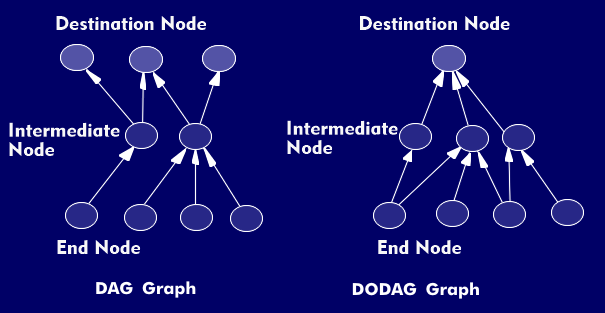routing protocol for low power and lossy networks (WIoT) (RPL)
The Routing Protocol for Low Power and Lossy Networks (RPL) was developed by the Internet Engineering Task Force( IETF) in direct relation to the 6LoWPAN protocol, IPv6 Low Power over WPAN. The RPL protocol relies on the assumptions that most traffic in Low Power and Lossy Networks( LLN) travels over only a few nodes, as many-to-one or one-to-many communications.
Therefore, the RPL protocol applies metrics that aim to optimize routing paths. Such metrics can include the properties of the links, such as their latency and reliability, as well as the properties of the nodes. Such a network can run simultaneously under multiple instances with different optimization criteria. For this optimization, the RPL protocol knows the destination oriented graph, Destination Oriented Directed Acyclic Graph( DODAG).
To determine the DODAG construction, the nodes periodically send out messages to determine the RPL instances. The corresponding information is used to determine a new DODAG and transmitted to the intermediate and destination nodes. This minimizes the overhead of routing states.

